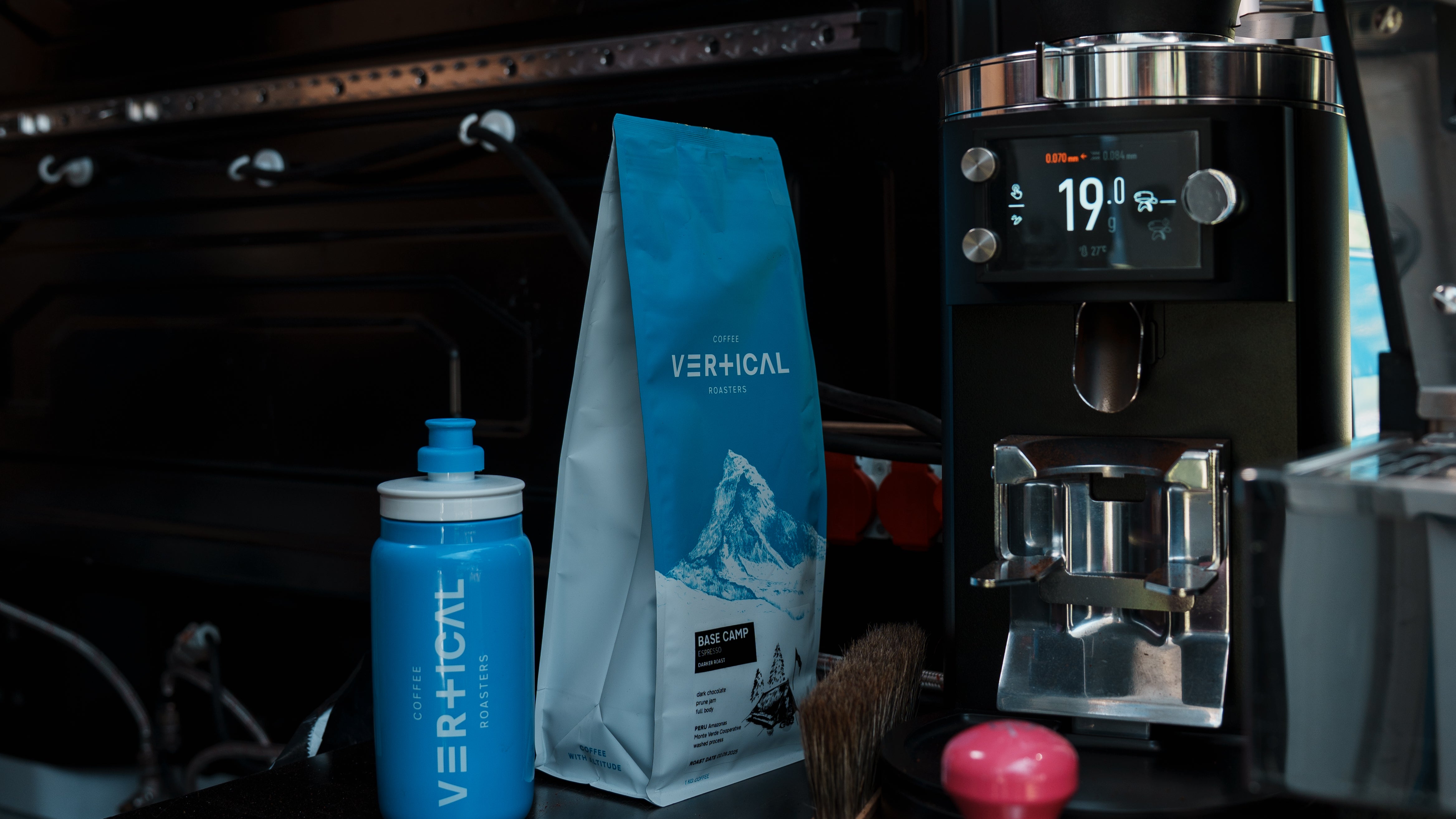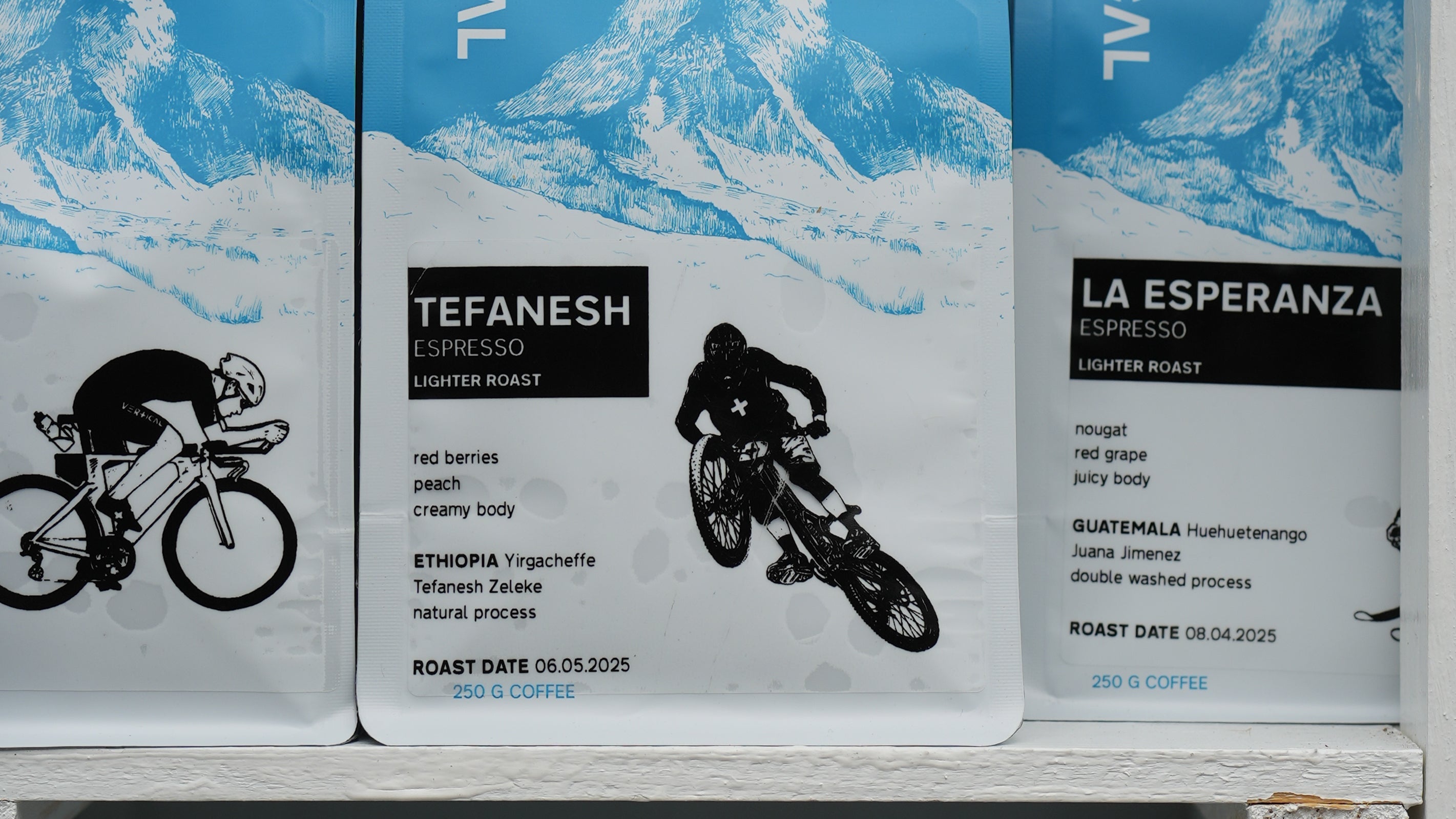Coffee ABC - E is for Extraction

When we speak of extraction, we mean the process of removing a substance from an item or a thing, often using a solvent. In our case this item is the roasted coffee bean from which we're extracting tasty contents using water as a solvent and magically creating a coffee drink.
The more we extract from the coffee bean, the stronger our drink becomes. Well, that's the definition of "strong" which coffee people use when they talk about strength. An espresso will typically have 8-10% dissolved solids in the beverage, a filter coffee around 1,5% and a long black about 2,5%. The rest of the coffee beverage is water. That means that the espresso is "stronger" than the filter coffee - but the "strength" has nothing to do with the taste or roast level.
In order for the coffee beverage to be extracted from the coffee bean, it needs to be roasted - roasting makes the coffee bean soluble. The point at which the bean becomes soluble during roasting is when we can distinctly hear a cracking sound in the roaster - this is called "first crack". After this mark, the coffee can be extracted and further roasting the coffee will make the bean more soluble - but also impact its flavour as some compounds will be burnt. But as a rule of thumb, a more developed coffee (roasted longer) will be more soluble and easier to extract. So an espresso roast (which is more developed) is more soluble and easier to extract than a (usually lighter) filter roast. Which makes sense when you consider that an espresso will have a contact time with water of around 30 and a filter preparation will take about 3 minutes.
The extraction of coffee is impacted by not only its solubility. There are also three main parameters we need to consider: The "three T's" time, temperature, and turbulence/pressure. The more we have of each T, the more we can extract. So more time (contact of coffee with water - also impacted by grind size) means more extraction; more temperature (hotter water) leads to a higher extraction; more turbulence (of the coffee grounds in the water) or more pressure will yield a higher extraction. By tweaking the "Ts", you can alter the extraction towards your preference.
There is a limit to coffee extraction though: you can't extract more than around 30% of a bean. The rest is cellulose and insoluble matter. Those 70% are the coffee grounds which we either throw away or put in our compost.
Folks often want to get the most out of something - so this bears the question if more is better? You probably have guessed already that this is not necessarily the case. Taste is highly individual but the sweet spot (where a majority of coffee drinkers enjoy their beverage) is the range between 18% and 25% extracted from the coffee bean. Below that percentage the coffee tends to taste sour and above it tastes bitter. This range is applied to all coffee extractions from filter to espresso, french press or bialetti.
Last but not least you may wonder what to do with the unused 70% of the coffee bean? As eluded, you can add it to your compost and reintroduce the nutrients back into the earth. Or you could also use it as a substrate for cultivating mushrooms like shiitake or oyster mushrooms.



